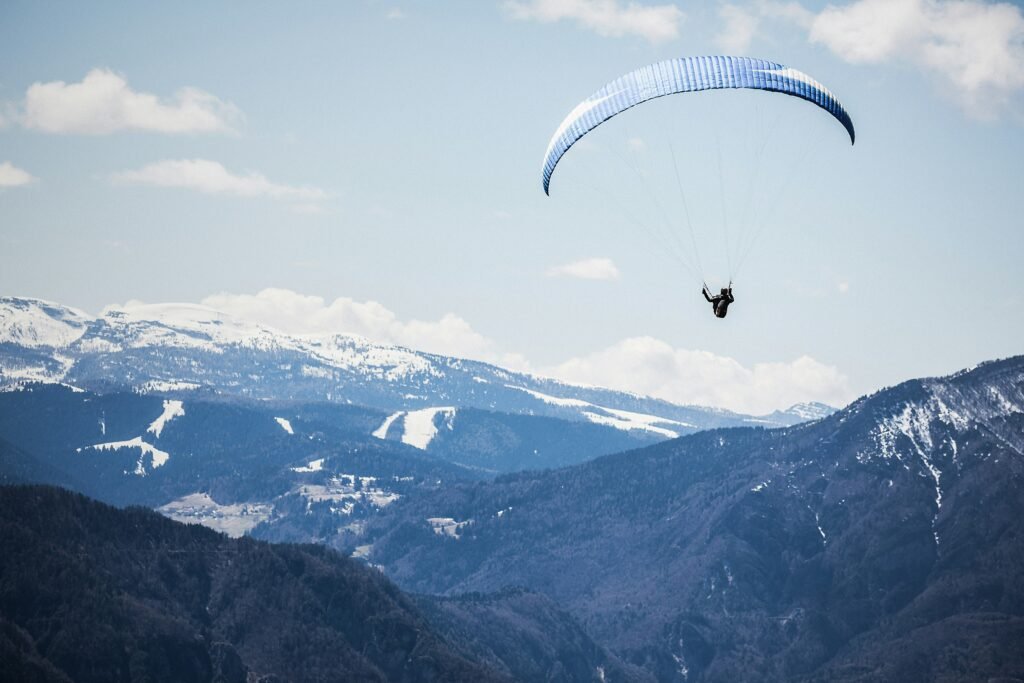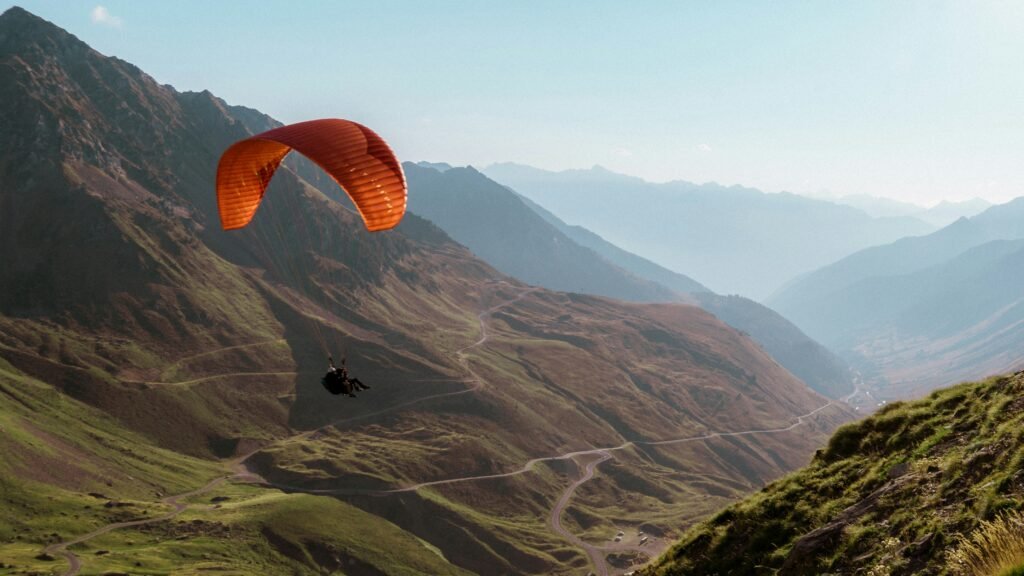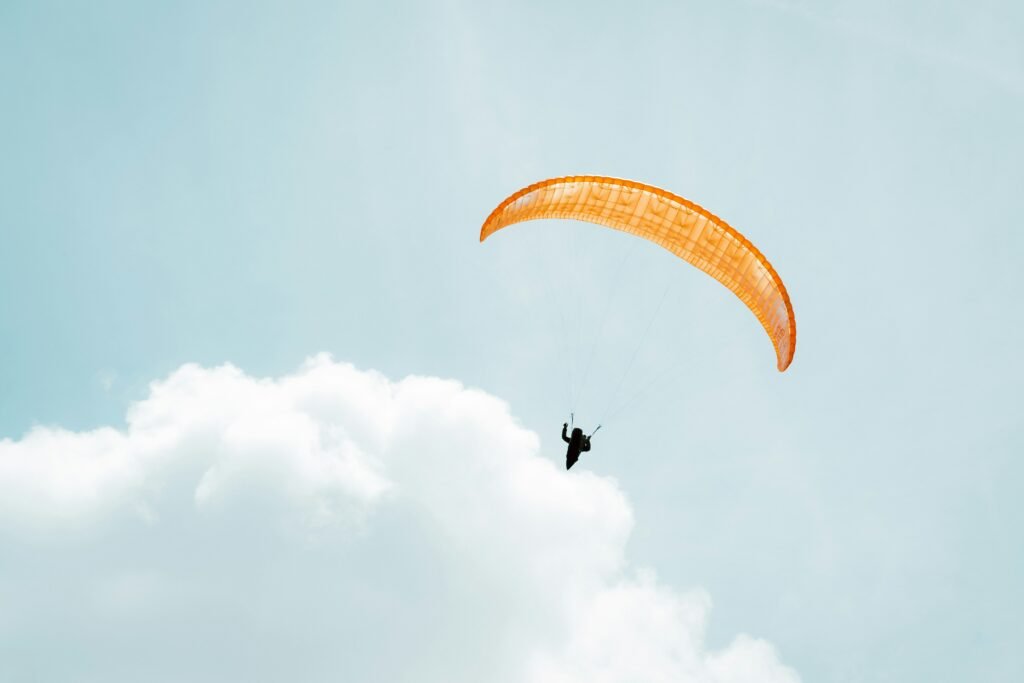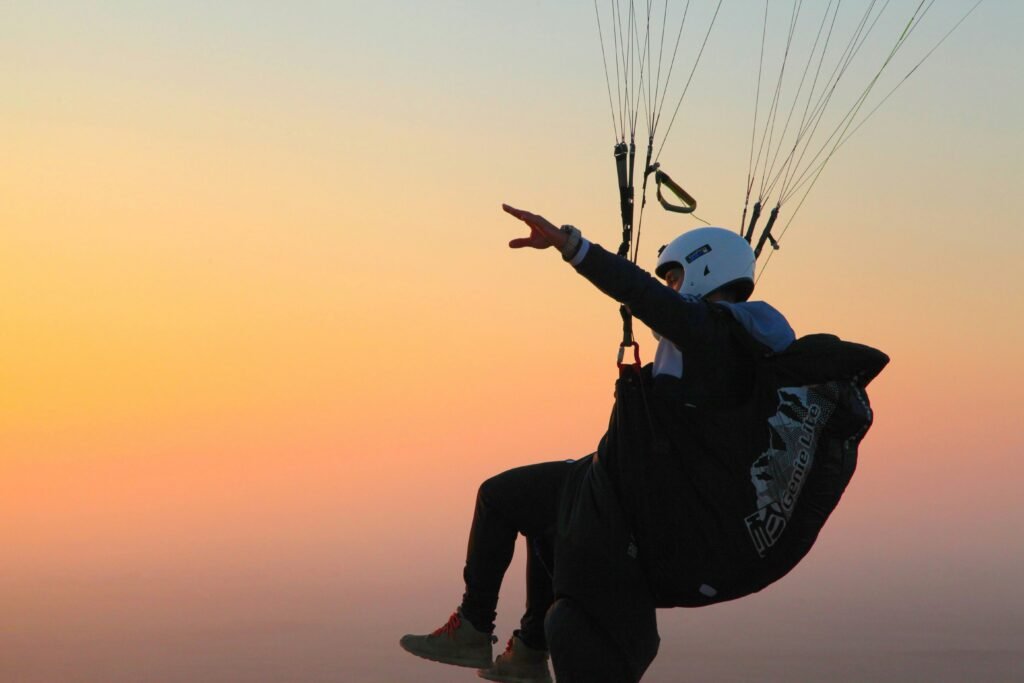Paragliding looks amazing—soaring through the sky, no engine, just wind and freedom. But then come the questions: Is it actually good for you? Or is it dangerous, stressful, or physically harmful?
It’s totally normal to wonder. Any sport that involves flying from a mountain sounds a little extreme. But here’s the truth: paragliding is not only safe (when done properly), it can actually be very good for you—physically, mentally, and emotionally.
Short Answer
Paragliding is very good for you—it’s gentle on the body, great for mental health, and helps reduce stress while boosting confidence. Tandem flights are safe and accessible, and most people walk away feeling calmer, prouder, and more alive. It’s not just an adventure—it’s a reset for your mind and mood.
Tip: Paragliding VS skydiving compared
Physical impact: is it hard on the body?
Surprisingly, paragliding is not physically demanding—especially tandem flights, which are designed for beginners.
You don’t need to be in top shape. You don’t need strength or stamina. You just need to jog a few steps at takeoff, sit comfortably in the harness, and lift your legs for landing.
That said, your body does benefit from the experience:
- You get fresh air, sun, and time in nature
- You use some light coordination during takeoff
- Your posture improves as you sit upright in flight
- Your heart rate rises slightly from excitement, not exertion

So no, it’s not a workout—but it gets you moving, breathing, and feeling alive.
Tip: What is a tandem jump in skydiving?
Mental effects: the big benefits
This is where paragliding really shines. Mentally, paragliding is incredibly good for you.
Here’s why:
- It reduces stress: floating silently in the sky is deeply calming
- It improves focus: you become present, alert, and in the moment
- It boosts confidence: doing something bold rewires how you see yourself
- It clears your mind: nature + altitude = instant mental reset
Even if you start the flight nervous or tense, many people say they land feeling peaceful, proud, and more grounded than they expected.
Tip: What is paragliding?
Facing fear: growth disguised as adrenaline
Yes, it can be scary at first. But that’s exactly why paragliding is so good for personal growth.
Doing something that scares you (safely) teaches you that:
- You can handle more than you think
- Fear doesn’t have to stop you
- Courage is often just taking one small step
Paragliding is a unique way to face your fear and come out stronger on the other side—without needing to be reckless.

Tip: What is the difference between paragliding and parasailing?
Is it dangerous?
This is the question everyone asks.The honest answer? Paragliding has some risk—but very little in a tandem flight with a trained pilot. Most accidents happen to solo pilots doing extreme flying or ignoring weather warnings.
In a professional tandem setup, with proper gear and a certified instructor, the activity is very safe. You’re strapped in, guided every step of the way, and flying only in good conditions. As with any outdoor sport, there’s risk—but when managed properly, it’s minimal.
Is it addictive?
Maybe not in a bad way—but yes, paragliding can be life-changingly enjoyable.
Many people say their first flight gave them:
- A new outlook on life
- A desire to challenge themselves more
- A lasting memory of peace and freedom
It becomes more than a hobby—it becomes a source of joy and clarity, even if you do it just once.
Tip: How much does base jumping cost?
Who should avoid it?
Most people can paraglide, but a few exceptions apply:
- People with serious heart, back, or mobility conditions
- Those with extreme fear of flying or strong vertigo
- Small children or anyone under the minimum age/weight limit (set by providers)

If you’re unsure, ask your doctor or the paragliding company. But for most healthy adults, paragliding is perfectly safe and accessible.
Final thoughts: more good than you’d expect
So, is paragliding good or bad for you? Physically gentle. Mentally uplifting. Emotionally unforgettable. Paragliding isn’t just an adventure—it’s a way to reconnect with nature, push past fear, and gain a fresh, open-sky perspective on life.

